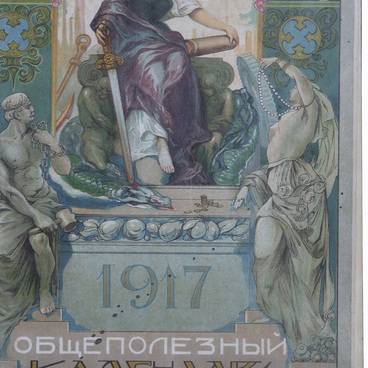A lubok is a printed, hand-colored picture on a specific topic. Lubok prints were very diverse and covered religious, fairy-tale, political or everyday topics. Colorful pictures were incredibly popular. As a rule, despite all the comicality of the image, lubok prints answered the villager’s eternal questions about life and death, good and evil, sin and redemption, wealth and avarice. In addition, such images could serve as a source of news about life outside the village, events of national importance, wars, inventions and much more.
In the second half of the 19th century, Ivan Dmitrievich Sytin was one of the largest producers and distributors of printed pictures. His first lithographic lubok prints were “Peter the Great Raises a Cup for His Teachers, ” “How Suvorov Plays Knucklebones with Village Children, ” and “How Our Slavic Ancestors Were Baptized in the Dnieper and Overthrew the Pagan Perun.” Sytin’s lubok images were printed on thick paper in seven colors in the technique of chromolithography. They cost two and four kopecks apiece. In 1882, at the All-Russian Art and Industrial Exhibition in Moscow, Ivan Sytin received a diploma and a bronze medal for his products.
63 sheets of the album with lubok prints “Russian Popular Images and Drawings Before 1860. A Publication of Sytin & Co” contain hand-colored lubok images that were most popular in Russia before 1860. Initially, lubok images were hand-colored by peasant women. They made paints from everyday materials, such as egg yolk and onion broth. Instead of brushes, they used hare paws. Peasant “colorists” believed that the main feature of their craft was the brightness of illustrations and the fast pace of work.
Due to innovative approaches,
Sytin managed to increase the rate of production of prints and improve their
quality. New images were made in the technique of lithography. Special
lithographic stones were used, on which the image was applied in a special way.
To perform the role of “colorists”, three professional artists were hired.
Their duties included the creation of drawings on lithographic stones. With the
help of a lithographic pencil or pen, the artists made a halftone outline of
the image on the stone. To introduce the second color, they applied hatching
and lines to another stone, which had to be aligned exactly with the first
drawing. Then they painted over the new stone with the right color and printed
each picture for the second time.




